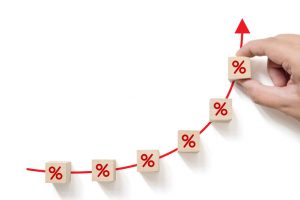 First American Financial Corporation released the February 2022 First American Real House Price Index (RHPI). The RHPI measures the price changes of single-family properties throughout the U.S. adjusted for the impact of income and interest rate changes on consumer house-buying power over time at national, state and metropolitan area levels. Because the RHPI adjusts for house-buying power, it also serves as a measure of housing affordability.
First American Financial Corporation released the February 2022 First American Real House Price Index (RHPI). The RHPI measures the price changes of single-family properties throughout the U.S. adjusted for the impact of income and interest rate changes on consumer house-buying power over time at national, state and metropolitan area levels. Because the RHPI adjusts for house-buying power, it also serves as a measure of housing affordability.
“In February 2022, the Real House Price Index jumped up by nearly 31%. That’s the fastest growth in the more than 30-year history of the series. This rapid annual decline in affordability was driven by two factors – a 21.7% annual increase in nominal house prices and a nearly full percentage point increase in the 30-year, fixed mortgage rate compared with one year ago,” said Mark Fleming, Chief Economist at First American. “Rising mortgage rates impact both housing supply and demand, limiting supply by reducing the propensity of homeowners to sell and flattening demand by reducing consumer house-buying power.”
Fleming continued, “For home buyers, the only way to mitigate the loss of affordability caused by a higher mortgage rate is with an equivalent, if not greater, increase in household income. Even though household income has increased 5.1% since February 2021 and boosted consumer house-buying power, it was not enough to offset the affordability loss from higher rates and rapidly rising nominal prices.”
February 2022 Real House Price Index Highlights
- Real house prices increased 5.8% between January 2022 and February 2022.
- Real house prices increased 30.6% between February 2021 and February 2022.
- Consumer house-buying power, how much one can buy based on changes in income and interest rates, decreased 3.6% between January 2022 and February 2022, and decreased 6.8% year-over-year.
- Median household income has increased 5.1% since February 2021 and 70.4 percent since January 2000.
- Real house prices are 5.7% more expensive than in January 2000.
- While unadjusted house prices are now 48.8% above the housing boom peak in 2006, real, house-buying power-adjusted house prices remain 25.8% below their 2006 housing boom peak.
“Rising mortgage rates and surging nominal house prices are expected to continue outpacing household income, so affordability will likely wane further nationally in the near term,” said Fleming. “One forecast, based on an estimate of when the 10-year Treasury yield will peak, suggests that the 30-year, fixed mortgage rate will likely peak between 5.0 and 5.7%, but may move as high as the low 6% range. So, let’s examine how these mortgage rate scenarios would impact house-buying power. We can use the RHPI to model shifts in income and interest rates and see how they either increase or decrease consumer house-buying power and affordability. When incomes rise and/or mortgage rates fall, consumer house-buying power increases.”
Fleming continued, “In the latest RHPI report reflecting February 2022 data, the 30-year, fixed mortgage rate stood at 3.8%. Since then, rates have increased sharply, breaking the 5-percent barrier in mid-April. The increase in rates since February reduced house-buying power by $60,000. If the average mortgage rate reached 5.5%, assuming a 5% down payment and average household income of approximately $70,800, house-buying power falls by an additional $21,000. If rates increased even higher to 6.0%, house-buying power would fall by $40,000 compared with 5.0%.”
The top five states with the greatest year-over-year increase in the RHPI are:
- Florida (+43.1%)
- South Carolina (+42.8%)
- Arizona (+39.0%)
- Georgia (+38.8%)
- Connecticut (+35.8%)
Among the Core Based Statistical Areas (CBSAs) tracked by First American, the five markets with the greatest year-over-year increase in the RHPI are:
- Charlotte, N.C. (+46.1%)
- Raleigh, N.C. (+42.4%)
- Phoenix (+41.3%)
- Tampa, Fla. (+39.6%)
- Jacksonville, Fla. (+39.1%)
There were no states with a year-over-year decrease in the RHPI, and among the Core Based Statistical Areas (CBSAs) tracked by First American, there were also no markets with a year-over-year decrease in the RHPI.
“Rising mortgage rates impact affordability, but historical context is important. An average 30-year, fixed mortgage rate of 5.5% is still well below the historical average of nearly 8%. Even with mortgage rates at 5.5%, house-buying power is over $360,000, which is still strong and at the same level as 2018,” said Fleming. “Recency bias may have many thinking that rates below 3 percent and house-buying power above $450,000 is normal, but it is anything but normal from a historical perspective. The last two years were the exception, not the rule, and the housing market is adjusting to a not-so-new normal.”
The next release of the First American Real House Price Index will take place the week of May 30, 2022 for March 2022 data.

 DSNews The homepage of the servicing industry
DSNews The homepage of the servicing industry









